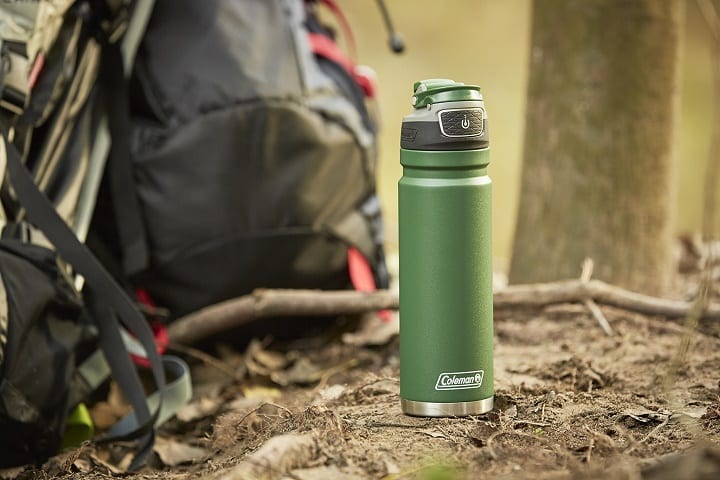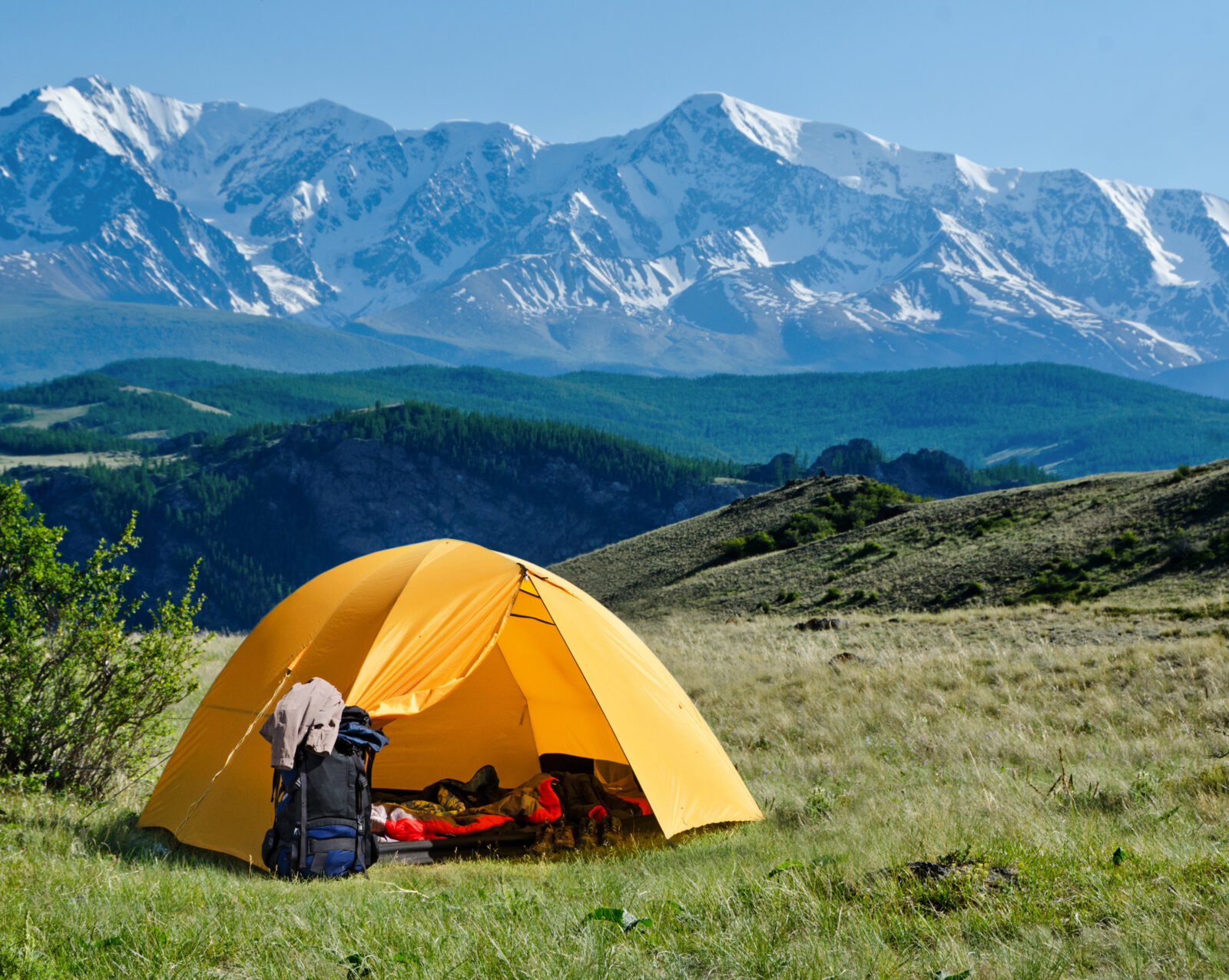Organizing your first-ever thru-hike and feeling overwhelmed with everything you need to do?
You’re not alone.
Undertaking a thru-hike is both an exciting and daunting task, particularly if you’re setting out on your first cross-country adventure. We know how difficult it can be to efficiently plan and complete a thru-hike, so we’ve created this guide to do just that.
Up next, we’ll discuss some need-to-know tips for a successful first thru-hike so your adventures can be as seamless as possible.
1. Always train before leaving home
If you’ve ever seen the movie Wild, you might be under the impression that you can leave home and immediately start a thru-hike of the Pacific Crest Trail (PCT), all without training for your adventures.
Unfortunately, while this might be possible for some folks, it’s generally not a good idea to start thru-hiking without putting in the time to physically prepare your body.
Rather, it’s best to start training, either through running, walking, cycling, hiking, or even swimming, as early as possible before your hike. Doing so will help prepare your body for the physical demands of trekking through the alpine of Sequoia and Kings Canyon National Parks so you can focus on your adventure.
2. Start Budgeting Early
Fact : Thru-hiking is an expensive pursuit.
From purchasing new gear, like a 2 person tent, hiking poles, and plenty of hiking socks, to paying for food on the trail, having enough money to finance your adventure is essential.
However, many would-be thru-hikers make budgeting an afterthought in the hopes that they can live cheaply on the trail. While it is certainly possible to get by on a thru-hike with a tight budget, doing so is less than ideal.
In fact, most hikers will find that they spend between $500 and $1,000 per month of thru-hiking. So, budgeting for your trip as early as possible can pay dividends in the long term. Needless to say, you don’t want to be in the backcountry of Yosemite National Park and realize that you’ve run out of money.
Read More : 5 Things to Know Before Buying Used Camping Gear
3. Study your route extensively
Most folks who thru-hike spend plenty of time studying their route, but it’s important to reiterate how essential this research really is. In reality, failing to plan is the same as planning to fail, so researching your route is critical.
Investing in guidebooks and actual maps (in addition to route-finding tools like a GPS hiking watch) is essential. It’s also worth reading online forums for thru-hikers to learn more about current trail conditions and any new regulations that you ought to keep in mind as you hike.
Furthermore, many popular thru-hikes, like the Appalachian Trail (AT) and the Continental Divide Trail (CDT) cross through parks that require permits for all overnight stays. Therefore, you’ll want to apply for permits to places like Yellowstone National Park and Glacier National Park long before you start hiking.
4. Go lightweight with all your gear
Thru-hikers are known as lightweight hiking fanatics and for good reason. You don’t want to carry unnecessary weight on your back for thousands of miles.
Of course, not everyone needs to have a backpack with a sub-4lb (1.8 kg) base weight to have a successful thru-hike. But, minimizing your pack weight to the best of your abilities will make a difference in the long term.
In particular, you’ll want to focus on minimizing the weight of some big-ticket items, like your summer sleeping bag and sleeping pad. A few ounces here and there might not seem like much now, but you’ll definitely appreciate the lower pack weight when you’re trekking through the hills of Shenandoah National Park.
5. Build a support network
For many thru-hikers, trekking is a solitary activity. However, even though you’re trekking alone, you’ll still need a solid support network to get you through your adventures.
Thru-hiking is known for being mentally draining and demanding, so it’s important that you have friends, family, and other thru-hikers in your social circle to help support you during your travels.
Whether you plan to have a weekly phone call with a friend during your re-rations or you make it a point to talk to other thru-hikers on the trail, having social interaction on a regular basis can make a big difference to your well-being.
6. Plan your rations wisely
Food and fuel are always a topic of concern for thru-hikers as no one wants to run out of supplies in the wilderness. As a result, planning your rations wisely is vital during your thru-hike.
Many trekkers send themselves pre-packaged rations to post offices along the trail. This is often a great way to save money while ensuring that you have the supplies that you need.
But be sure that you leave yourself with a bit of cash to spend at grocery stores during your hike. Chances are high that you’ll crave certain things during your hike, so being stuck eating food that you thought you might enjoy many months ago often isn’t ideal.
Instead, pack yourself a small set of rations resupply boxes to send to yourself on the trail. Then, supplement those rations with goodies that you buy on your rest days for maximum variety in your meals.
Read More : How Much Water Should You Bring to Camping?
7. Be flexible
We’ve talked a lot about planning for your trip with extensive research and other similar preparations. While we still stand by this advice, we should also mention that a little flexibility goes a long way while thru-hiking.
In particular, all thru-hikers need at least a small amount of tolerance for uncertainty. You might not hike as fast each day as you thought, or foul weather might hamper your process on the trail.
Whatever the situation, taking it all in stride is part of thru-hiking. In reality, you’ll want to prepare as much as you can and hope for the best, but you need to be ready to adapt to whatever situations you might face on the trail.
8. Do a practice hike
If you’re new to thru-hiking, doing a practice thru-hike before your big outing might be a good idea. In fact, many new thru-hikers automatically set their sights on major trails, like the PCT or AT, even though there are plenty of smaller thru-hikes that are worth doing, too.
Tackling a smaller thru-hike, like the Long Trail or the Colorado Trail, can help you develop the skills you need for a lifetime of adventure.
So, consider doing a short practice thru-hike to prepare you for your long trek.
9. Always listen to your body
Thru-hiking is a tiring and exceptionally physical pursuit. While we hope that your adventure goes off without a hitch, it’s important that you always listen to your body while you’re on the trail.
In fact, small things like blisters can easily snowball into major health problems when ignored or left untreated. At the same time, your body might occasionally tell you that it’s tired and that it needs a break after a long week of hiking.
When this happens, taking a rest day is important. Pushing too hard through pain can lead to physical injuries and mental fatigue, so taking those little breaks when your body demands them is critical to long-term success on the trial.
10. Hike your own hike
Finally, it’s important to remember that thru-hiking is a personal journey. While it might sound cliché to say that you should hike your own hike, it’s vital that you do what’s right for you on the trail rather than letting external pressures dictate your experience.
For some folks, this might mean thru-hiking alone, even if your family would prefer that you go with a friend. Alternatively, it might mean that you do less hiking each day than others on the trail simply because you prefer to take things slow, rather than rushing from campsite to campsite.
Regardless of how you hike, though, what’s important is that you experience a thru-hike that’s perfect for you.
Recommended Reads :
Gaby Pilson
Gaby is a professional mountain guide with a master’s degree in outdoor education. She works primarily in the polar regions as an expedition guide, though she can be found hiking, climbing, skiing, sailing, or paddling in some of the world’s most amazing places when not at work.


